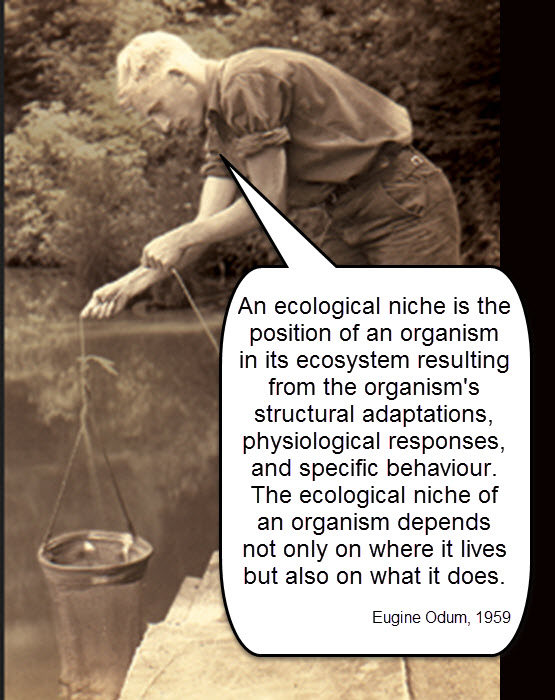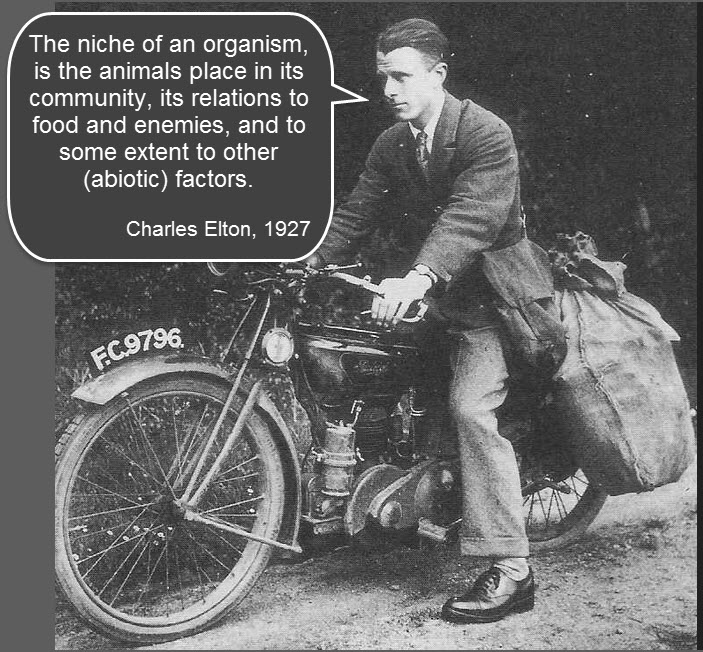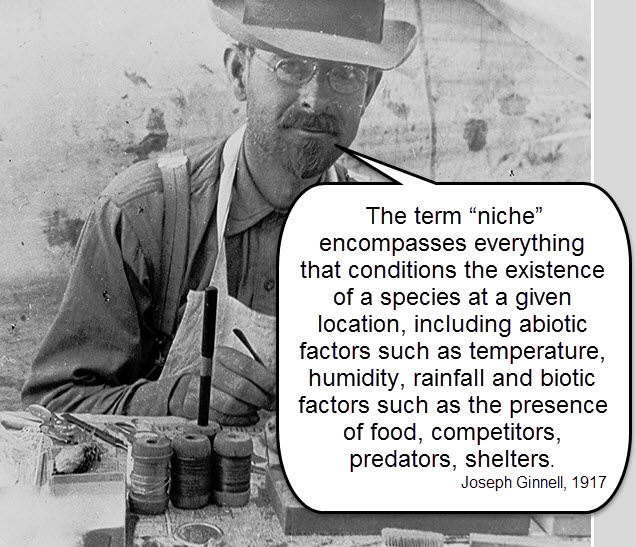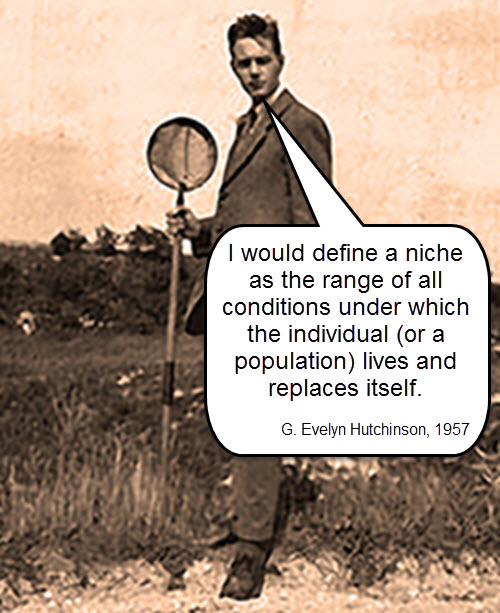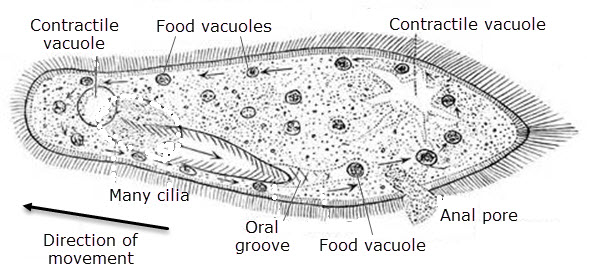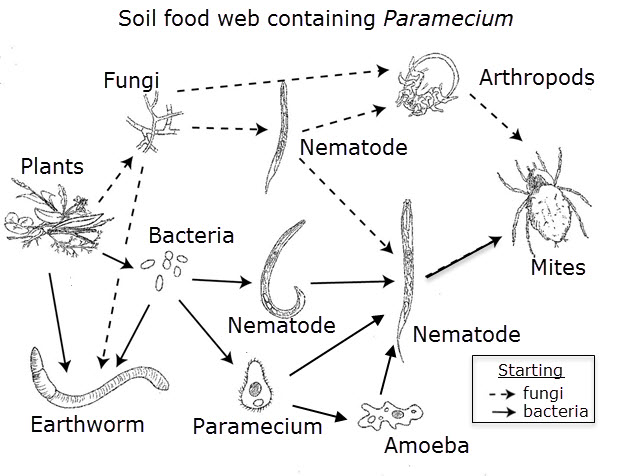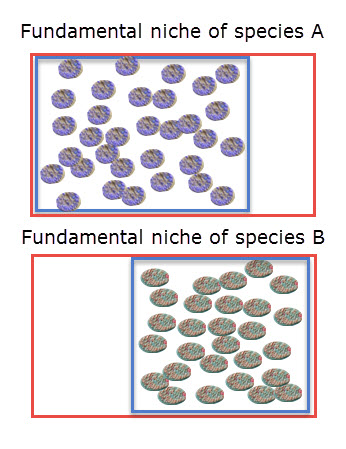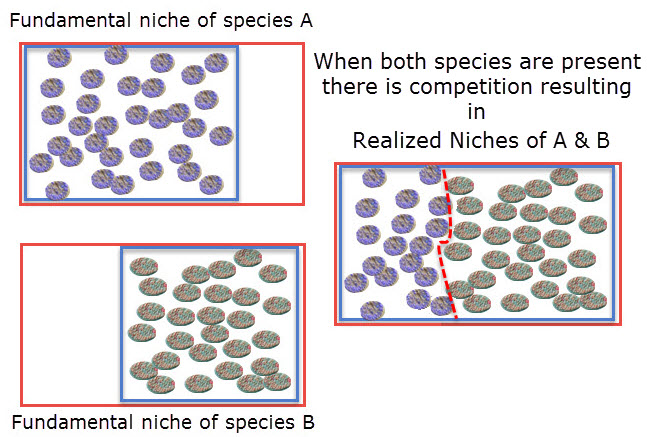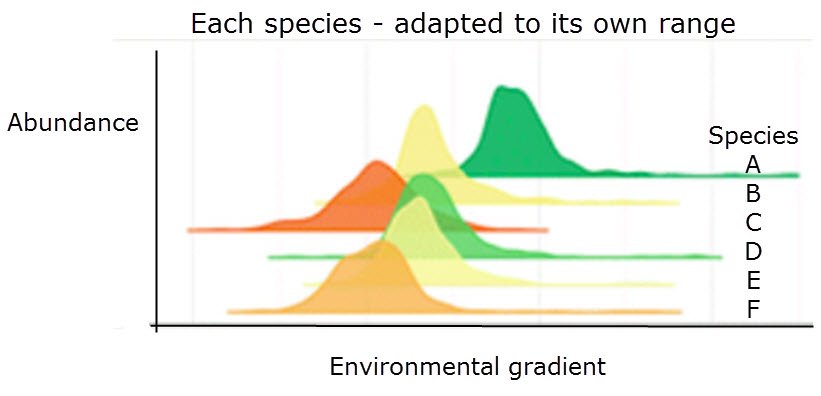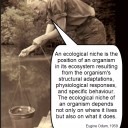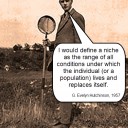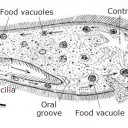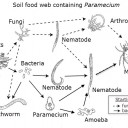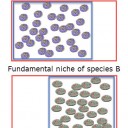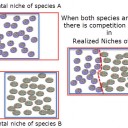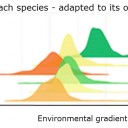Symbiosis v Competitive exclusion
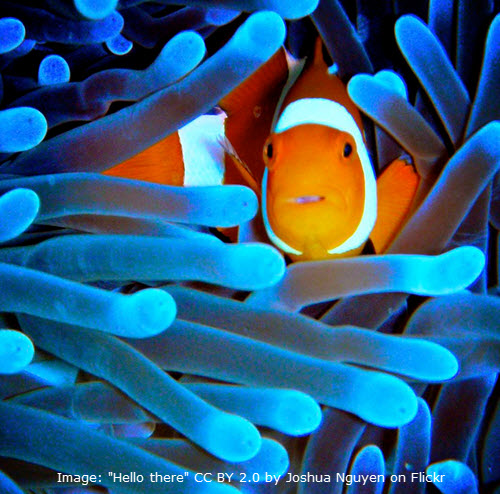 The "Niche concept" is notorious as it's definition has never quite been pinned down and there exist many slight variations. This activity introduces the niche concept and the difference between realized and fundamental niches using Paramecium. There is a second activity with a simulation of the Paramecium experiment of Gause illustrating competitive exclusion before a final activity about symbiosis in coral reefs between the coral polyps and a dinoflagellate algae, 'Zooanthella".
The "Niche concept" is notorious as it's definition has never quite been pinned down and there exist many slight variations. This activity introduces the niche concept and the difference between realized and fundamental niches using Paramecium. There is a second activity with a simulation of the Paramecium experiment of Gause illustrating competitive exclusion before a final activity about symbiosis in coral reefs between the coral polyps and a dinoflagellate algae, 'Zooanthella".
Lesson Description
Guiding Question
- Two species cannot survive indefinitely in the same habitat if their niches are identical. Why not?
- Other species grow best when their symbiotic partner speceis is present. How come?
- What is the difference between the interactions between these two types of species?
Activity 1 - Fundamental and realised niche
Which of the following ideas about the ecological niche from these four famous ecologists makes the most sense?
Can you make a single definition which encompasses all the points?
The Niche Concept - four definitions
The description of a niche may include descriptions of the organism's life history, habitat, and place in the food chain.
An organisms niche includes the essential things needed by a living organism in order to survive. Food shelter and a place to reproduce?
An ecological niche includes how a population responds to the abundance of its resources and enemies (e.g. by growing when resources are abundant, and predators, parasites and pathogens are scarce) and how it affects those same factors (e.g. by reducing the abundance of resources through consumption and contributing to the population growth of enemies by falling prey to them). The abiotic or physical environment is also part of the niche because it influences how populations affect, and are affected by, resources and enemies.
Watch the short video ![]() The basics of paramecium about the way a single celled hunter, Plasmodium lives it's life.
The basics of paramecium about the way a single celled hunter, Plasmodium lives it's life.
Annotate the diagram of Plasmodium on the ![]() Paramecium niche activity worksheet illustrating how this cell, lives and its interactions with other species, both its prey and it's predators.
Paramecium niche activity worksheet illustrating how this cell, lives and its interactions with other species, both its prey and it's predators.
Activity 2 - Competitive exclusion principle
This animation ![]() Paramecium growing in a flask of bacteria illustrates the principal of competitive exclusion. The brown dots represent bacteria which are the food species for two competing species of Paramecium, both single celled heterotrophs.
Paramecium growing in a flask of bacteria illustrates the principal of competitive exclusion. The brown dots represent bacteria which are the food species for two competing species of Paramecium, both single celled heterotrophs.
The simulation is based on experiments studied in microcosms for periods of 25 days by the Russian biologist Gause. In his experiments of the competition between Paramecium caudatum and Paramecium aurelia. P. aurelia always displaced P. caudatum when grown in mixed culture.
Explore the simulation. Click the green flag on each one to start. Compare the results of population sizes in each simulation.
Questions
Why don't you always get the same outcome each time you run the simulation?
.........................................................................................................................................................................
If there are limited resources, two organisms who exploit those resources will have to compete for them if they are to survive. It is possible for this competition to mean that one of the species becomes extinct.
This phenomenon is called "Competitive exclusion"
Why is it "competitive"?
.........................................................................................................................................................................
Why is it "exclusion"?
.........................................................................................................................................................................
Sometimes both Paramecium species survive in the simulation. When we find two species living together in the same place there is almost always a difference between their niches.
Those species which survive today have won many competitions for limited resources in the 5 million years life has existed on Earth.
What differences can you see in the niches of the two species of Paramecium in the simulation?
.........................................................................................................................................................................
.........................................................................................................................................................................
Activity 3 - Symbiotic relationships in coral reefs
Watch these videos about relationships between different species on a coral reef.
![]() What are corals,
What are corals, ![]() Coral reef symbiosis,
Coral reef symbiosis, ![]() Coral bleaching
Coral bleaching
Complete ![]() this Coral symbiosis worksheet. This will help to record useful information about the life of Zooxanthellae algae and the Coral polyps. It will also illustrate the problems of Reef bleaching which is thought to be an effect of rising sea temperatures.
this Coral symbiosis worksheet. This will help to record useful information about the life of Zooxanthellae algae and the Coral polyps. It will also illustrate the problems of Reef bleaching which is thought to be an effect of rising sea temperatures.
Interactions between species which don't lead to “Competitive Exclusion”
The interaction of snails feeding on the algae growing on rocks. This is called _ _ _ _ _ _ _ _.
A dog whelk drilling a hole in the shell of a snail, then eating it. This is called _ _ _ _ _ _ _ _
A tick sucking the blood of a wild boar. This is called _ _ _ _ _ _ _ _
Two species of tree growing in the same forest, each trying to grow taller than the other to get more of the light. This is called _ _ _ _ _ _ _ _ _ _ _
A grass snake catching a frog and swallowing it whole before digesting it is called _ _ _ _ _ _ _ .
A fungus and an algae living together, the algae does photosynthesis and the fungus is very efficient at extracting nutrients from tiny bits of dead organic material is called _ _ _ _ _
Teacher's notes
This video shows an easy way to culture Paramecium
This lesson covers these points
- Application: The symbiotic relationship between Zooxanthellae and reef-building coral species.
- Skill: Analysis of a data set that illustrates the distinction between fundamental and realized niche.
Edible coral polyps -
 One of the most amazing things about a coral reef is that it’s alive covered with a layer of living coral polyps. Follow these simple directions from Dawn publications to teach your students about corals as they create an edible “coral polyp”
One of the most amazing things about a coral reef is that it’s alive covered with a layer of living coral polyps. Follow these simple directions from Dawn publications to teach your students about corals as they create an edible “coral polyp”
The original activity from the California Academy of Sciences is probably better suited to IB students

 IB Docs (2) Team
IB Docs (2) Team

